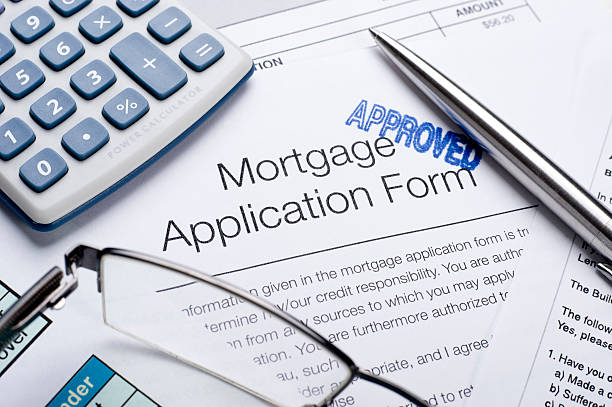Introduction
When it comes to managing your mortgage, refinancing can be a powerful tool for optimizing your financial strategy and achieving your goals. Whether you’re looking to lower your monthly payments, shorten your loan term, or access equity for other purposes, refinancing offers a range of options to meet your needs. Two common refinancing options are cash-out refinancing and rate-and-term refinancing. In this comprehensive guide, we’ll explore the differences between these two approaches, helping you make an informed decision about which option is right for you.
Understanding Cash-Out Refinancing
Cash-out refinancing involves replacing your existing mortgage with a new loan that’s larger than your current outstanding balance. The difference between the new loan amount and your existing mortgage balance is paid out to you in cash at closing, giving you access to the equity you’ve built up in your home. This extra cash can be used for a variety of purposes, such as home improvements, debt consolidation, or funding major expenses like education or medical bills.
Pros of Cash-Out Refinancing:
- Access to Equity: Cash-out refinancing allows you to tap into the equity you’ve accumulated in your home, providing you with a source of funds for large expenses or investments.
- Lower Interest Rates: If interest rates have dropped since you obtained your original mortgage, cash-out refinancing can allow you to lock in a lower rate on your new loan, potentially saving you money on interest over time.
- Consolidate Debt: By using the cash from a cash-out refinance to pay off high-interest debts such as credit cards or personal loans, you can consolidate your debt into a single, lower-interest payment, potentially saving money on interest and simplifying your finances.
Cons of Cash-Out Refinancing:
- Higher Monthly Payments: Because you’re borrowing more money than you currently owe, cash-out refinancing typically results in higher monthly mortgage payments. Be sure to consider whether you can afford the increased payments before proceeding.
- Resetting the Loan Term: When you refinance, you’re essentially starting over with a new mortgage term. If you’ve already been paying your current mortgage for several years, refinancing could extend the time it takes to pay off your loan, potentially increasing the total interest paid over the life of the loan.
Understanding Rate-and-Term Refinancing
Rate-and-term refinancing, also known as no-cash-out refinancing, involves replacing your existing mortgage with a new loan that has different terms, such as a lower interest rate or a shorter loan term. Unlike cash-out refinancing, rate-and-term refinancing does not involve borrowing additional funds beyond your existing mortgage balance. Instead, the goal is to secure more favorable terms on your loan, potentially saving you money on interest and reducing your monthly payments.
Pros of Rate-and-Term Refinancing:
- Lower Interest Rates: One of the primary reasons borrowers choose rate-and-term refinancing is to take advantage of lower interest rates. By securing a lower rate on your new loan, you can reduce your monthly payments and potentially save thousands of dollars in interest over the life of the loan.
- Shorter Loan Term: Rate-and-term refinancing also allows you to shorten the term of your loan, such as switching from a 30-year to a 15-year mortgage. While this may result in higher monthly payments, it can help you pay off your mortgage faster and build equity in your home more quickly.
- Improved Loan Terms: In addition to lower interest rates and shorter loan terms, rate-and-term refinancing can also allow you to switch from an adjustable-rate mortgage (ARM) to a fixed-rate mortgage, providing stability and predictability in your monthly payments.
Cons of Rate-and-Term Refinancing:
- Closing Costs: Like any refinancing transaction, rate-and-term refinancing typically involves closing costs, such as loan origination fees, appraisal fees, and title insurance. Be sure to factor these costs into your decision and determine whether the potential savings justify the expense.
- Qualification Requirements: To qualify for rate-and-term refinancing, you’ll need to meet certain eligibility criteria, including a minimum credit score, income verification, and sufficient home equity. If you don’t meet these requirements, you may not be able to refinance or secure favorable terms on your new loan.
Choosing the Right Option for You
When deciding between cash-out refinancing and rate-and-term refinancing, consider your financial goals, priorities, and circumstances. If you need access to cash for major expenses or investments, cash-out refinancing may be the best option. However, if your primary goal is to lower your interest rate, shorten your loan term, or improve your loan terms, rate-and-term refinancing may be more suitable.
Before proceeding with either option, carefully evaluate the potential costs, benefits, and risks involved. Consider consulting with a mortgage professional or financial advisor to discuss your options and determine the best course of action based on your individual needs and objectives.
Conclusion
Mortgage refinancing can be a valuable tool for optimizing your financial strategy and achieving your goals. Whether you choose cash-out refinancing to access equity or rate-and-term refinancing to secure more favorable loan terms, refinancing offers a range of options to meet your needs. By understanding the differences between these two approaches and carefully evaluating your options, you can make an informed decision that aligns with your financial goals and priorities. Remember to consider factors such as interest rates, closing costs, and qualification requirements when weighing the pros and cons of each option. With the right strategy, refinancing can help you save money, reduce debt, and achieve greater financial stability and security.

